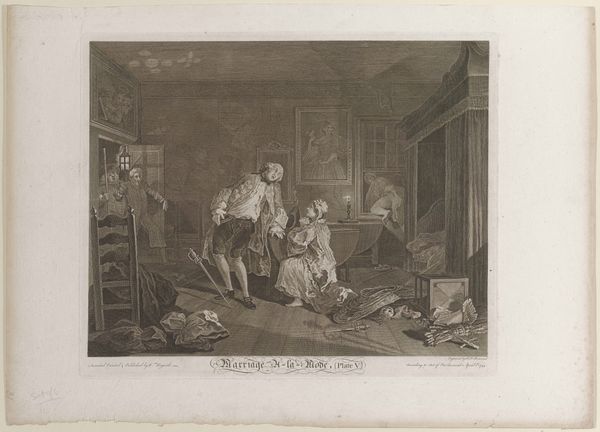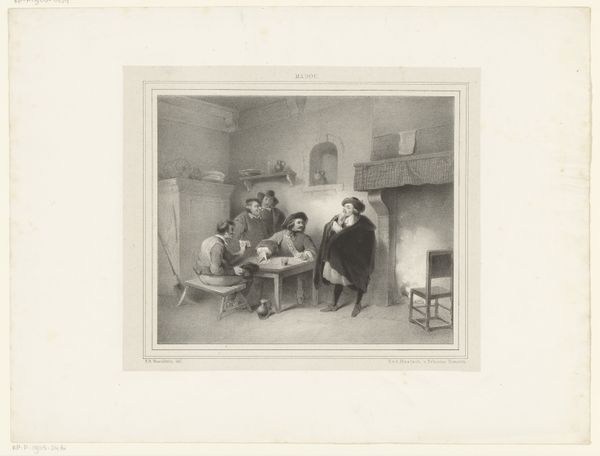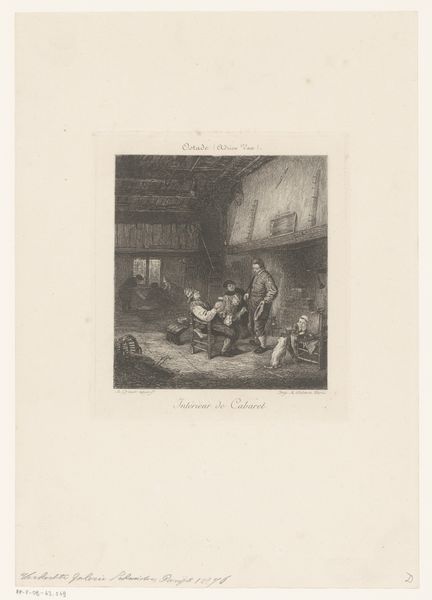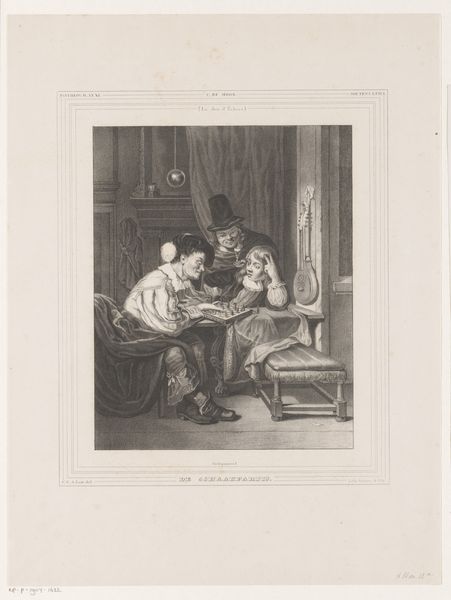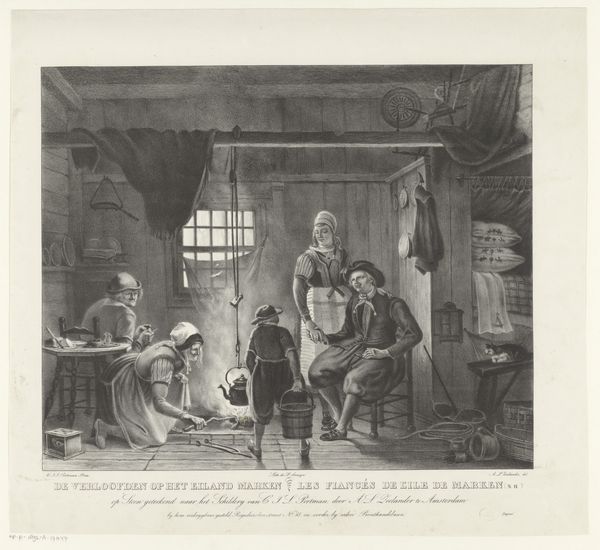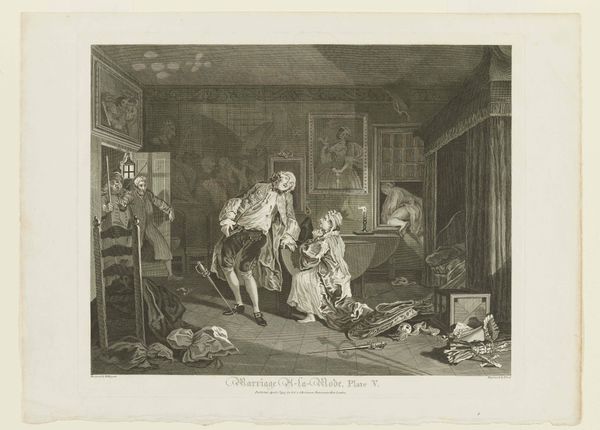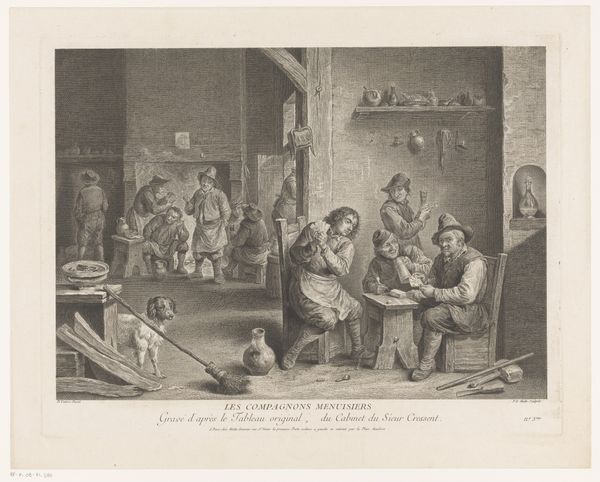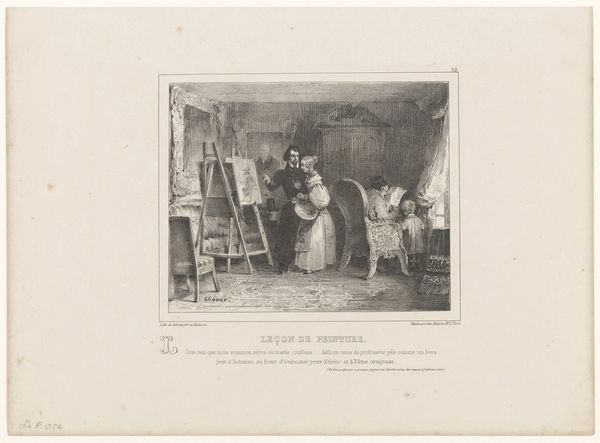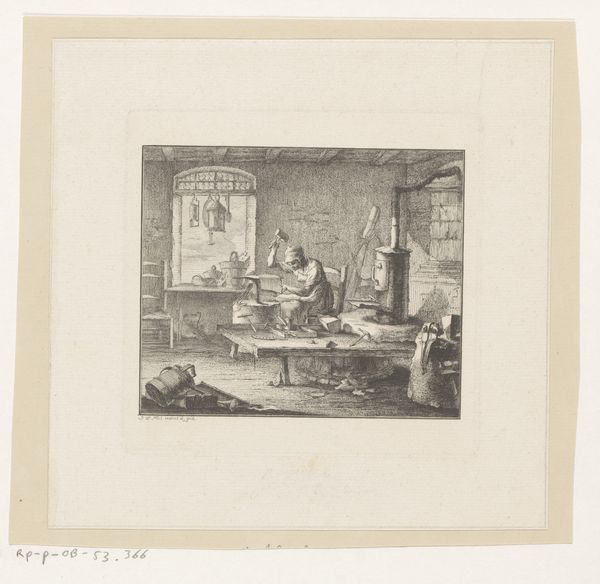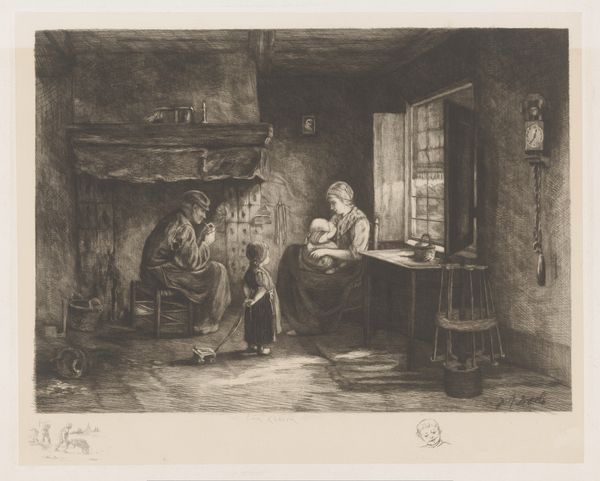
print, engraving
#
narrative-art
#
baroque
# print
#
genre-painting
#
engraving
Dimensions: height 345 mm, width 448 mm
Copyright: Rijks Museum: Open Domain
Curator: Here we see “Interior with family preparing a meal”, a Baroque engraving made in 1748 by Pierre Chenu. What are your immediate thoughts about it? Editor: Well, I’m immediately struck by the darkness. Not just the literal lack of light, but a certain grimness in the everyday activities depicted. The figures look trapped in this shadowy interior. Curator: The darkness certainly shapes our perception. Remember, in Baroque art, dramatic use of light and shadow wasn't just stylistic; it created emotional intensity, reflecting a world still grappling with religious and social upheavals. In this intimate family scene, though, are we still supposed to assume this dark atmosphere signifies struggle? Editor: I think so. Look at the title: "A Peaceful Household," and consider that the artwork uses irony, critiquing the realities of 18th-century domestic life. Despite their assigned roles, I find it a critical and somewhat sad portrayal, certainly not a simple celebration of family. Curator: Ah, an intriguing angle. It contrasts, of course, with the cozy domestic imagery often seen then, of families happily gathered, harmonious and full of plenty. Chenu flips that familiar ideal. The meager meal, the dimly lit room—it certainly isn’t what most patrons wanted to portray in those images. Editor: Precisely. Where's the opulence, the excess? This feels far more real, more in line with the precarious economic realities of many at the time. Even the presence of a man appearing with a flickering light seems to disturb rather than illuminate the existing familial power dynamics. Curator: Light can often represent knowledge, guidance, perhaps even divine intervention. Editor: Or male dominance – a further patriarchal interruption of domestic work. Curator: We might assume this interruption also affects that period’s notion of social order. Still, by subverting expectations, Chenu makes us confront difficult truths often masked by superficial appearances of domestic bliss. Editor: Exactly, and it pushes us to examine how representations of the "peaceful household" serve to reinforce and normalize certain social structures. We’re looking at an image designed to disturb our complacent consumption of what family and labor mean. Curator: I came to this piece initially focused on domestic stability, its importance as a symbol. However, examining the work through the lens of cultural criticism adds greater context. It's so useful to acknowledge those shadows. Editor: For me, the art deepens in meaning when the symbolism is unpacked within a feminist framework that allows us to question, and hopefully, begin to deconstruct 18th century notions of identity and gendered norms.
Comments
No comments
Be the first to comment and join the conversation on the ultimate creative platform.
